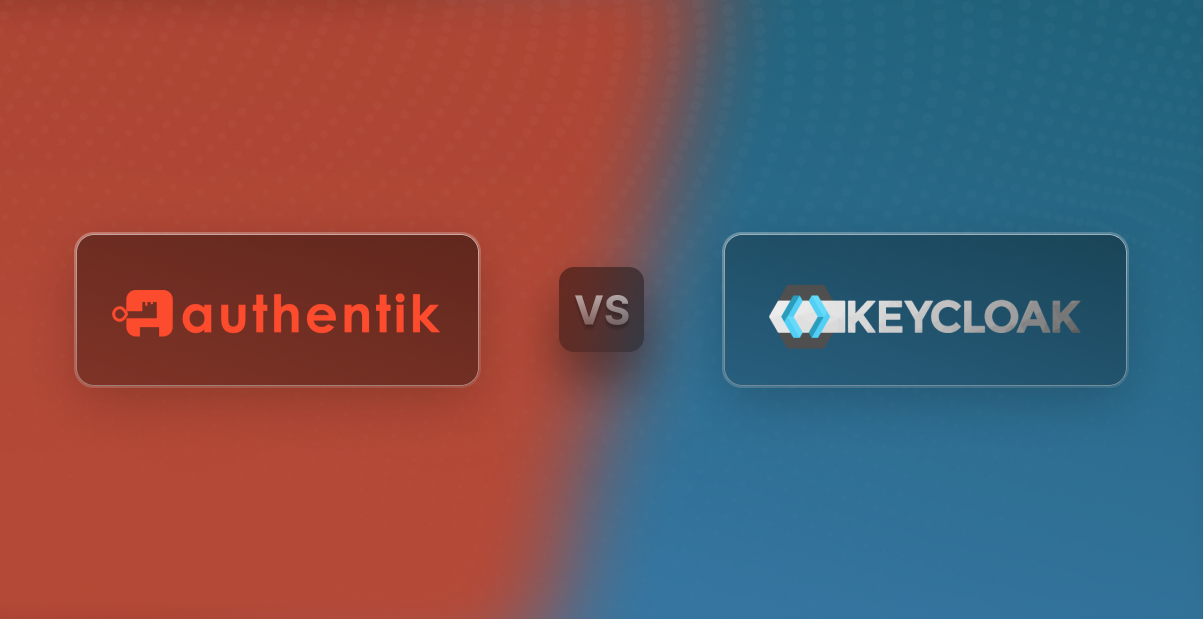Table of Contents
- Introduction
- Authentik vs. Keycloak Overview
- Authentik vs. Keycloak Tool Comparison
- Security Features
- Customization and Flexibility
- Integrations
- Deployment and Scalability
- Customer Support
- User Experience
- Pricing
- Who Should Choose Authentik?
- Who Should Choose Keycloak?
- Open-Source Authentik vs. Keycloak Alternatives
Introduction
We have a lot to choose from when it comes to authentication and authorization solutions. But with variety comes the challenge of selecting the right tool for your specific needs. Today, we’re comparing Authentik and Keycloak to see how they stack up and which might be the better choice for your scenario.
Authentik vs. Keycloak Overview
Authentik and Keycloak are open-source Identity and Access Management (IAM) solutions for authentication, authorization, and user management. Each caters to different types of organizations with varying requirements.
In a nutshell:
- Authentik shines in small to medium-sized projects where simplicity and resource efficiency are key.
- Keycloak, on the other hand, is a scalable solution, making it an easy choice for larger organizations with complex IAM needs.
Authentik vs. Keycloak Tool Comparison
| Feature | Authentik | Keycloak |
|---|---|---|
| Security Features | Basic MFA, SSO; ideal for straightforward setups. | Advanced security features, suited for regulated industries. |
| Customization | Minimal customization; focuses on quick deployment. | Highly customizable; supports OAuth2, OpenID Connect, SAML. |
| Integrations | Lightweight with basic IdP integration, fits microservices well. | Broad third-party integrations, including LDAP, Active Directory, etc. |
| Deployment | Easy and quick to deploy; resource-efficient. | Built for scalability and complex enterprise environments. |
| Customer Support | Community-driven, with newly available enterprise support options. | Large community; enterprise support available via Red Hat. |
| User Experience | Simple, user-friendly, and quick to set up. | Detailed management tools, great for complex needs. |
| Pricing | Open-source and free, with optional paid support. | Open-source and free, with optional paid enterprise support. |
Security Features
- Authentik and Keycloak offer security features like multi-factor authentication (MFA) and single sign-on (SSO).
- Keycloak’s advanced configurations make it a strong candidate for industries with strict security requirements, like finance or healthcare.
- Authentik’s security features are well-suited for smaller-scale environments, prioritizing ease of configuration over deep security customization.
Customization and Flexibility
- Keycloak provides a high degree of customization, supporting various authentication protocols (OAuth2, OpenID Connect, SAML) and enabling complex configurations for multi-tenant environments. However, it can become resource-intensive, particularly when managing numerous realms, which could limit its suitability for smaller teams.
- Authentik, in contrast, offers basic customization that emphasizes quick deployment, making it ideal for teams needing a straightforward IAM setup without extensive adjustments.
Integrations
- Keycloak excels with its extensive integration support for LDAP, Active Directory, and custom identity providers. This makes it a preferred choice for enterprise setups with diverse integration requirements.
- Authentik, while also capable of integrating with other systems, is optimized for microservices architectures and simpler setups where a lightweight, flexible IAM solution is preferred.
Deployment and Scalability
- Keycloak’s architecture supports scalability, making it suitable for enterprises with complex IAM needs requiring strong multi-tenant configuration support. However, some users note that managing many realms can lead to performance issues.
- Authentik’s lightweight nature and ease of deployment are often cited as considerable benefits, making it a great option for projects where rapid deployment and resource efficiency are prioritized.
Customer Support
- Both solutions offer community support, but Authentik has recently added enterprise support options for organizations that need guaranteed assistance. This additional support makes it a more viable choice for businesses that require formal support packages.
- Keycloak has well-established enterprise support through Red Hat, a significant factor for teams needing extensive backup.
User Experience
- Authentik’s simple setup and user-friendly design are well-suited for teams looking to get started quickly without extensive training.
- Keycloak, although more complex, offers powerful management tools and detailed dashboards, which can be invaluable for users handling large-scale, complex setups.
Pricing
- Both tools are open-source and free to use.
- Authentik offers optional paid support for those requiring professional assistance, similar to Keycloak’s enterprise support packages available through Red Hat.
Who Should Choose Authentik?
Authentik is a great fit for:
- Small to medium-sized businesses with straightforward IAM needs.
- Startups and SMBs that need quick, cost-effective deployment without extensive customization.
- Teams leveraging microservices architectures that benefit from lightweight, flexible solutions.
- Organizations with limited IT resources seeking a user-friendly IAM setup.
Who Should Choose Keycloak?
Keycloak is ideal for:
- Large enterprises needing to support complex, large-scale IAM deployments.
- Regulated industries where advanced security and compliance are priorities.
- Organizations with extensive integration needs, like those using LDAP, Active Directory, and custom IdPs.
- Teams that require rich customization and scalability to align IAM solutions with specific requirements.
Open-Source Authentik vs. Keycloak Alternatives
For teams seeking an alternative that bridges the gap between Authentik’s simplicity and Keycloak’s complexity, SuperTokens offers an attractive middle ground. It’s designed to balance ease of use with essential security features, making it perfect for teams looking to deploy IAM solutions quickly without sacrificing flexibility. SuperTokens’ open-source nature and focus on developer experience make it a solid choice for teams prioritizing simplicity and functionality.
Explore SuperTokens further: SuperTokens Product

